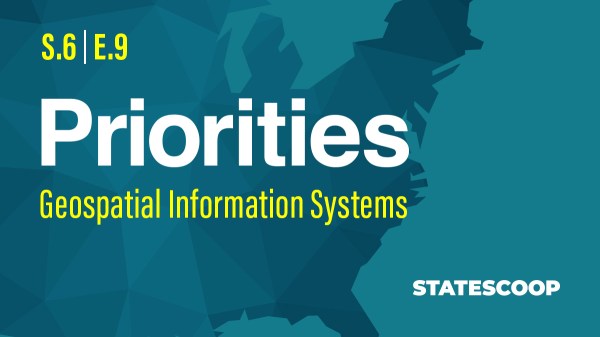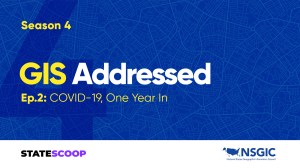
For GIS that makes a difference, state GIOs need decision-making authority
For geospatial information systems leaders in state government, efficiency and empowerment in decision-making is key.
For Cy Smith, Oregon’s geospatial information officer, that authority came from the state CIO and was codified in 2017, after more than a decade of Smith constantly going to the state CIO for approval on projects and decisions.
“Every time I turned around, I had to go back to the state CIO — to my boss — and say ‘OK, will you sign off on this?,'” Smith says on the first episode of GIS Addressed, a new podcast from StateScoop and the National States Geographic Information Council.
That approval process led Smith to ask the CIO for decision-making authority around geospatial information systems in the state.
Much like in the state government chief information officer world where consolidations of information technology operations and infrastructure are leading to a more empowered state CIO role, the geospatial world also needs that decision-maker, Smith says.
“It ended up being a rubber stamp, so it made sense from his perspective to just say ‘these are decisions that you can make, you’re communicating with the community. This makes perfect sense for you to have this delegated authority,'” Smith says.
The key, Smith says, is having the leeway to make decisions around that data.
“That authority, I think, makes the difference between a state GIO and someone who is simply coordinating activities across the community,” Smith says. “A coordinator is really only relying on good will and enlightened self interest to get things done and a GIO has more authority to do that, so I think thats the key difference the GIO is making decisions on behalf of the enterprise related to important geospatial issues.”
In 2017, that authority went one step further in Oregon the state legislature codified the state GIS council and the state GIO role. In addition, the legislature passed a mandate that all public bodies will share geospatial framework data with each other free of charge, Smith says.
Smith says that mandate elevates the prominence of GIS in state government, and moves it another step forward.
On the podcast:
- Cy Smith, geospatial information officer, Oregon
- Jake Williams, associate publisher and director of strategic initiatives, StateScoop
Things to listen for:
- Part of the GIO role is one that promotes and facilitates data sharing, Smith says. To help with that, he works to overcome the three most common barriers: privacy and confidentiality, risk and liability, and funding. Funding is the key issue that underlies all of the data-sharing issues, he says.
- Almost everything government does relies on locational information, Smith says. In addition, almost everything government does relies on coordination between multiple agencies at all levels of government which emphasizes the importance of GIS as a connector.
- “We have to create and maintain collaborative governance structures that support those cross-silo activities,” Smith says. In Oregon, that structure is the state GIS council that engages citizens, academia, tribal governments, the federal government and other state agencies.
- Building a business case is key to empowering GIS offices and leaders with decision making authority, Smith says.
- NSGIC has developed guidelines for state GIOs to help them facilitate the conversations about giving more authority to GIS agencies inside government. Going forward, more sharing and collaboration on a nationwide scale will help elevate the role of the GIO at the national level, Smith says.
GIS Addressed is StateScoop and the National States Geographic Information Councils new podcast about the role of geographic information systems in government.
In addition to listening to this podcast and other StateScoop podcasts on StateScoop.com , you can now subscribe on iTunes and have episodes delivered directly to your podcasts app on your smartphone when new episodes are released.


